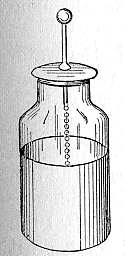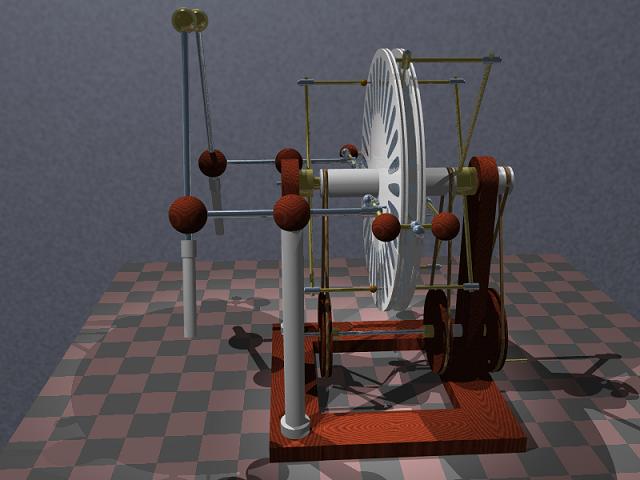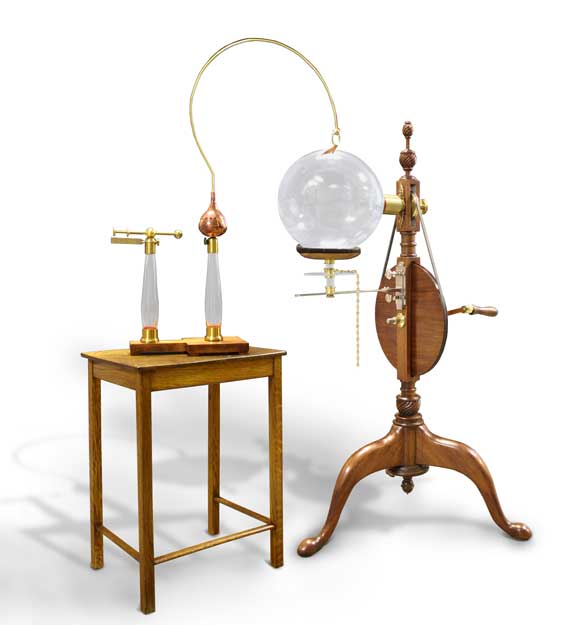Taryn McCrobie
The Human Eye
The eye is an essential organ within the human body. Without it, our days would be dark and gloomy. We wouldn’t be able to witness the wonders of a rainbow or the magic of a starry night. Although we constantly use our eyes, most people do not know very much about them. Therefore, by researching the anatomy, function, and problems of the eyes, I was able to not only expand my knowledge, but will now also be able to take better care of my eyes.
The eye is a very unique and important organ within the human body and it contains three layers of tissue to allow it to do its job. The first of these layers is called the sclerotic coat (sclera). This is a tough layer which appears white everywhere except the cornea. The cornea is a raised area on the front of the eye which admits light and bends the light rays so that a single image can be made. In order to perform its essential function, the cornea is kept moist and clean by the secretions of the tear ducts in each eye. This is made possible by the conjunctiva which is a mucus membrane on the inside of the eyelids. When an infection occurs in this area, it is called conjunctivitis, more commonly known as pink eye (Basic).
The second layer of light is called the choroids coat and is extremely pigmented with melanin. The major job of this layer is to reduce the reflection of light within the eye so that a more focused image may be produced. It also contains the blood vessels that supply blood to all of the structures of the eye. The choroids coat on the front of the eye is called the iris and is forms the color of the eye depending on how much melanin there is. Less melanin makes blue eyes while more makes brown. The ciliary body is also a part of the second layer of the eye. This is a muscular area that is attached to the lens to control the amount of light that enters the eye by regulating the size of the lens. The dilator is the muscle that allows the iris to become smaller which makes the pupil larger to allow more light to come in. This is good for human vision at night because each shred of light that can be reflected into our eye allows us to see our dim environment better. There is also the sphincter which makes the iris larger and the pupil smaller to allow less light within the eye. This is helpful in broad daylight when there is more than enough light to see things around us and too much of it could damage our eyes (Basic).
Finally, the last layer of the eye is the retina. This contains cones and rods which are the light-sensing portion of the eye. Rods are used for vision in low light while cones are used for color vision and detail. In the center of the retina is the macula and in the center of that is the fovea centralis, an area which contains only cone cells and is responsible for seeing the details of the environment around us. The retina is also made up of a chemical called rhodopsin called “visual purple” that converts light into electrical impulses that the brain deciphers into vision. To do this, there are also the retinal nerve fibers at the back of the eye which form the optic nerve. The optic nerve then conducts the electrical impulses to the brain. However, there is one section within the eye where the optic nerve and the blood vessels exit the retina. This spot is called the optic disk and results in a blind spot because of the lack of rods and cones. Lucky, each eye covers the other eyes blind spot so no grief comes of it. The optic disk is represented in the picture to the right (Basic).
Within the eyeball are two chambers full of fluid and separated by the lens. The larger of these contains a clear gel called the vitreous humor. The second chamber contains aqueous humor which is also clear but very watery fluid. This section is split up into two parts called the anterior chamber and the posterior chamber. The liquid is produced in the ciliary body and is drained through the canal of Schlemm (Basic).
The eye also contains a lens which is shaped as a bi-convex structure and is about 10mm in diameter. The lens is able to change shape because it is attached to muscles around the eye. This part is essential for fine-tune vision (Basic).
Since it is so delicate, the eyeball is protected within the orbital cavity which is made of bone. Within the bone, the eye is in a layer of fat which is similar to resting on a pillow. The eyelids protect the open portion of the eye from dust by blinking away dust and dirt in the air. This also keeps the eyes moist by spreading the liquid from the tear ducts. Tears are produced through lacrimal glands which are located above the outer segment of each eye and then drain down into the inner corners of each eye. Finally, eyelashes and eyebrows protect the eyes from larger particles that may result in injury. However, the eyeball is still able to move around because the orbital cavity is round and the fat is flexible. The muscles that allow this movement may be seen in the picture above (Basic).
In order to see color, various color-responsive chemicals in the cones are used called cone pigments. It is very similar to the mechanics of the rods except photopsins are used instead of scotopsin. This leaves the pigments to be made of retinal and photopsins and creates three kinds of color-sensitive pigments. These include red-sensitive pigment, green-sensitive pigment, and blue-sensitive pigment. Each cone cell has one of these pigments and can therefore only sense one of these colors. In addition, the eye is able to see almost any color that results from a mix of one of the three pigment colors. The diagram to the right shows the wavelengths of the three types of cones at the colors peak absorbency (Color Vision).
However, since the eye is such a complex organ, it can have numerous problems. One such problem is color blindness. Color blindness can be defined as “the inability to differentiate between different colors.” This problem is more common among males (eight percent of males are color blind) than females (four percent of females are color blind). The most common type of color blindness is with red-green and occurs when either the red of green cones are not present or not performing as they should. Fortunately, people with this problem, are still able to somewhat see these two colors, however, they often mix them up. This is a genetic disorder that is carried on the X chromosome and is very rare in seeing only different shades of gray (Color Blindness).
Another very serious problem is blindness. Normal vision (or visual acuity) is determined by reading a Snellen eye chart (to the left) and can be defined as 20/20 (being able to see an average amount of details from twenty feet away. 20/40 vision represents bad vision in that while you stand twenty feet away from something, you are only able to see what a normal person can see at forty feet. This logic continues up to 20/100 and at 20/200, one reaches the cutoff for legal blindness in the United States (Normal Vision). There are various ways that a person can become blind. A common one of these are cataracts which is cloudiness in the lens that blocks light from reaching the retina. Luckily, this may be cured through surgery by removing the lens and replacing it with an intraocular lens. Another way that a person may become blind is through glaucoma. This occurs when the aqueous humor fails to drain correctly and pressure builds up in the eye. This causes the cells and nerve fibers in the back of the eye to die. However, this may also be treated with medication and surgery. Diabetic retinopathy can also cause blindness and is the result of diabetes. A person with diabetes can easily get a blockage or leakage of blood vessels which can lead to scarring and ultimately, blindness. This may be treated with laser surgery. Trachoma is an infection that is caused by an organism called Chlamydia trachomatis which often causes blindness. However, it is very rare in the United States because it can easily be treated with antibiotics (Blindness).
Another common problem of the eye is nearsightedness and farsightedness. Nearsightedness (shown at the right) occurs when a person can only clearly see objects that are close by. Objects that are farther away are brought into focus at a point in front of the retina which makes them appear fuzzy. However, a diverging lens can be placed in front of the eye to adjust the light rays so that the image rests on the retina, creating a focused image. Farsightedness on the other hand can only clearly see objects that are farther away. Close objects are focused at a point behind the retina which also creates a fuzzy image. A converging lens can be used to cure this, however, by allowing images to once again, rests directly on the retina. Farsightedness can be show in the picture below (Sight).
A less common problem that occurs within the eye is Vitamin A deficiency. As a result of extreme deficiency, night blindness may occur. Vitamin A is necessary for retinal which is part of the rhodopsin molecule within rods. When there is a lack of Vitamin A, the levels of light-sensitive molecules become low. With this, the low amount of light may not be able to be detected by the weakened eyes. However, during the day, there is enough light for vision even if there is a low amount of Vitamin A (Vitamin A).
We all know that the eye plays an essential role in our every day activities. However, many people don’t know how complex the eye can be, and how many problems it may obtain. By learning more about it, we may be able to prevent getting these various problems in the future.
Works Cited
Bianco, Dr. Carl. "Basic Anatomy." How Vision Works. How Stuff Works. 3 Mar 2008
.
Bianco, Dr. Carl. "Blindness." How Vision Works. How Stuff Works. 3 Mar 2008
.
Bianco, Dr. Carl. "Color Vision." How Vision Works. How Stuff Works. 3 Mar 2008
.
Bianco, Dr. Carl. "Color Blindness." How Vision Works. How Stuff Works. 3 Mar 2008
.
Bianco, Dr. Carl. "Normal Vision." How Vision Works. How Stuff Works. 3 Mar 2008
.
Bianco, Dr. Carl. "Vitamin A Deficiency." How Vision Works. How Stuff Works. 3 Mar
2008 .
Sight. Think Quest Junior. 3 Mar 2008
.
 Electronn current is when electrons (or the negative charge) are flowing from positive to negative. The Right Hand Rule is important because it shows the direction of the magnetic field aoudn a current carrying conductor.
Electronn current is when electrons (or the negative charge) are flowing from positive to negative. The Right Hand Rule is important because it shows the direction of the magnetic field aoudn a current carrying conductor.
 By putting your thumb upright, is shows the currents direction. The direction that the fingers curl show the direction of the magnetic field. The concentric cirlces of the magnetic field aorund a current carrying wire can be labeled with dots or crosses. Solenoids is the wire wound as a helix around a metallic core. When an electrical current is passed through it, it creates a magnetic field. A bar magnet is similiar to the field shape of a solenoid madnetic field. The field can increase with greater current, more turns of wire, and soft iron core. When using the right hand rule for a solenoid, the thumb must point to the north pole.
By putting your thumb upright, is shows the currents direction. The direction that the fingers curl show the direction of the magnetic field. The concentric cirlces of the magnetic field aorund a current carrying wire can be labeled with dots or crosses. Solenoids is the wire wound as a helix around a metallic core. When an electrical current is passed through it, it creates a magnetic field. A bar magnet is similiar to the field shape of a solenoid madnetic field. The field can increase with greater current, more turns of wire, and soft iron core. When using the right hand rule for a solenoid, the thumb must point to the north pole.

















 The leyden jar was a break through in the storage of electricity. This discovery eventually led to the modern capacitor.
The leyden jar was a break through in the storage of electricity. This discovery eventually led to the modern capacitor.




















 The fundamental idea behind electricity is matter, and the fact that it is composed of atoms. In turn, atoms are composed of protons, electrons, and neutrons. Protons have a positive charge, electrons have a negative charge, and as you may be able to guess neutrons are neutral. Certain objects can and do become electrically positive or negative when they have a lack or an excess of electrons. Why electrons and not protons? Protons are constant; they are trapped in the nucleus of the atom and cannot get out. When an object has an equal number of protons and electrons, it is electrically neutral. We have here students a picture of an atom:
The fundamental idea behind electricity is matter, and the fact that it is composed of atoms. In turn, atoms are composed of protons, electrons, and neutrons. Protons have a positive charge, electrons have a negative charge, and as you may be able to guess neutrons are neutral. Certain objects can and do become electrically positive or negative when they have a lack or an excess of electrons. Why electrons and not protons? Protons are constant; they are trapped in the nucleus of the atom and cannot get out. When an object has an equal number of protons and electrons, it is electrically neutral. We have here students a picture of an atom:




